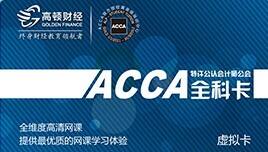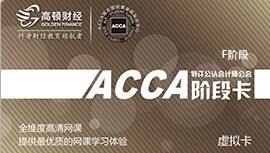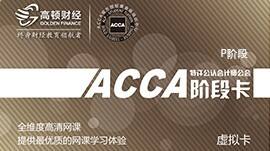2012年ACCA考试《F3财务会计》讲义辅导(6)
☆Relationship between a statement of financial position and a statement of income

●The balance sheets are not isolated statements, they are linked over time with the income statement
●As the business records a profit in the income statement, that profit is added to
the capital section of the balance sheet, along with any capital introduced. Cash
taken out of the business by the proprietor, called drawings, is deducted.
Illustration – the accounting equation:
The transactions:
Day 1 Avon commences business introduction $1,000 cash.
Day 2 Buys a motor car for $400 cash.
Day 3 Buys inventory for $200 cash.
Day 4 Sells all the goods bought on Day 3 for $300 cash.
Day 5 Buys inventory for $400 on credit.
SFP at the end of each day’s transactions:
Solution:
Day 1 Assets (Cash $1,000) = Capital ($1,000) + Liabilities ($0)
Day 2 Assets (Motor $400) = Capital ($1,000) + Liabilities ($0)
(Cash $600)
Day 3 Assets ( Inventory $200) = Capital($1,000) + Liabilities ($0)
(Motor $400)
(Cash $400)
Day 4 Assets ( Motor$ 400) = Capital + Liabilities ($0)
(Cash $700) (Beginning$1,000)
(Profit $100)
Day 5 Assets (Inventory $ 400) = Capital + Liabilities
( Motor$ 400) (Beginning$1,000)($400)
(Cash $700) (Profit $100)
Avon
Statement of Financial Position as at end of Day 5
|
|
$ |
$ |
|
Non – current assets |
|
|
|
Motor Van |
|
400 |
|
Current assets |
|
|
|
Inventory |
400 |
|
|
Cash in hand |
700 |
|
|
|
|
1,100 |
|
Total assets |
|
1,500 |
|
|
|
|
|
|
$ |
$ |
|
Capital account |
|
|
|
Balance at Day 1 |
1,000 |
|
|
Add net profit for the period |
100 |
|
|
|
|
1,100 |
|
Current liabilities |
|
|
|
Payable |
|
400 |
|
Total |
|
1,500 |
Example:
Continuing from the illustration above, prepare the SFP at the end of each day after accounting for the transactions below:
Day 6 Sells half of the goods bought on Day 5 on credit for $250.
Day 7 Pays $200 to his supplier.
Day 8 Receives $100 from a customer.
Day 9 Proprietor draws $75 in cash.
Day 10 Pays rent of $40 in cash.
Day 11 Receives a loan of $600 repayable in two years.
Day 12 Pays cash of $30 for insurance.
Your starting point is the SFP at the end of Day 5, from the illustration above.
Prepare: SFP at the end of Day 12
I.S. for the first 12 days of trading.
Solution:
Day 6 Assets (Inventory $ 200) = Capital + Liabilities
( Motor$ 400) (Beginning$1,000)($400)
(Cash $700) (Profit $150)
(A/Receivable$250)
Day 7 Assets (Inventory $ 200) = Capital + Liabilities
( Motor$ 400) (Beginning$1,000)($200)
(Cash $500) (Profit $150)
(A/Receivable$250)
Day 8 Assets (Inventory $ 200) = Capital + Liabilities
( Motor$ 400) (Beginning$1,000)($200)
(Cash $600) (Profit $150)
(A/Receivable$150)

相关阅读
2013年ACCA新大纲各科目全解析-P5.pdf2013/03/12
2013年ACCA新大纲各科目全解析-P4.pdf2013/03/11
2013年ACCA新大纲各科目全解析-P3.pdf2013/03/11

















